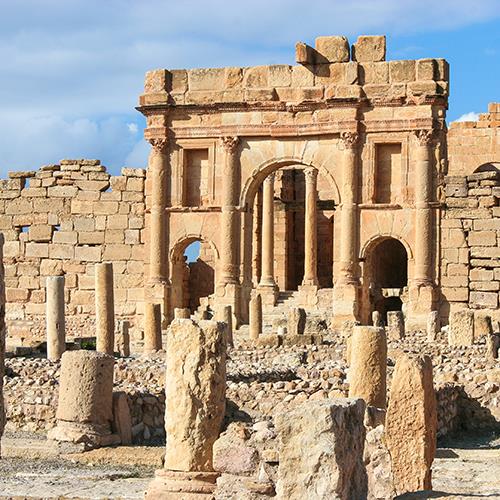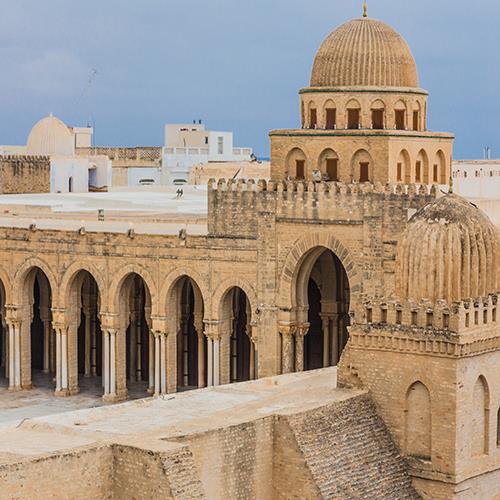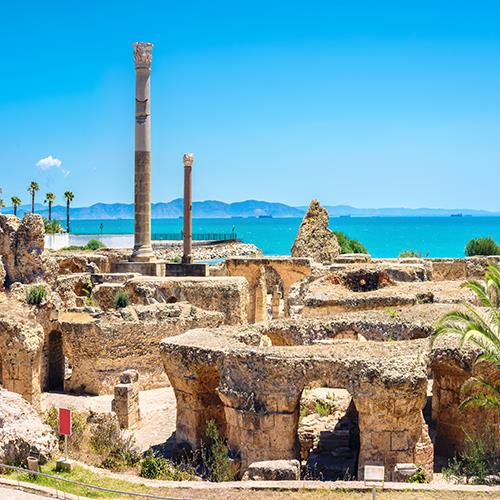UNESCO WORLD HERITAGE SITES IN TUNISIA

Amphitheatre of El Jem
The impressive 3rd-century Amphitheatre of El Jem was the first site to be added to the UNESCO World Heritage list in Tunisia. Located in a small village of El Jem, this was the largest colosseum in North Africa, once holding 35,000 people. It is now in ruins, but still pays testament to the structure which was erected here in the 3rd Century.

Archaeological Site of Carthage
The Archaeological Site of Carthage, the center of the Ancient Phoenician empire, was founded in the 9th-century B.C. on the Gulf of Tunis. From the 6th century onwards, it developed into a great trading empire covering much of the Mediterranean and was home to a lively civilization. Over the course of the long Punic wars, Carthage occupied territories belonging to Rome, which finally destroyed its rival in 146 B.C. A second (Roman) Carthage was then established on the site of the first ruins. Both can be viewed today and make for an interesting experience.

Dougga / Thugga
The town of Thugga is another ancient ruin located in the northwest of Tunisia. The elevated site was the capital of an important Libyco-Punic state which thrived under Roman rule but fell into decline in the Byzantine and Islamic periods. The majestic ruins cover 75 hectares that are visible today and are well worth a visit. Discover the development of the city over 17 centuries, although in ruins, many of the buildings are still clear as to their purpose.

Kairouan
Kairouan, founded in 670, was the capital of Tunisia until the 12th century when Tunis became the state capital. Located in the center of Tunisia, the city flourished under the Aghlabid dynasty in the 9th century. Today it is rich with architectural heritage and religious monuments. Explore the two mosques that dominate the architectural heritage of the city, the Great Mosque and the Mosque of the Three Gates.

Medina of Sousse
Sousse is a coastal town in the very north of Tunisia, not far from Sicily. It was an important commercial and military port during the Aghlabid period and is a typical example of a town dating from the first centuries of Islam. The town is dominated by Islamic buildings and traditions, and is a great for visitors to observe both Arab and Muslim influences in the architecture. Explore the naval history of the town, the ramparts, medina (with the Great Mosque), Bu Ftata Mosque and typical ribat (both a fort and a religious building.

Medina of Tunis
Tunis is the modern day capital of Tunisia and has always been a dominant city in the Muslim faith. Under the Almohads and the Hafsids, from the 12th to the 16th century, Tunis was considered one of the greatest and wealthiest cities in the Islamic world. The city is paced with Muslim monuments, over 700, including palaces, mosques, mausoleums, madrasas and fountains, all a testimony of the rich history of this city.

Punic Town of Kerkuane and its Necropolis
The Punic Town of Kerkuane is an example of an abandoned Phoenician city, most likely abandoned during the First Punic War (250 B.C.), and as a result, was not rebuilt by the Romans. The city remains in ruins but intact as no Roman city was built over the top, and show the only example of a Phoenicio-Punic city to have survived. The houses were built to a standard plan in accordance with a sophisticated notion of town planning and is a classic example of the architecture of the period.